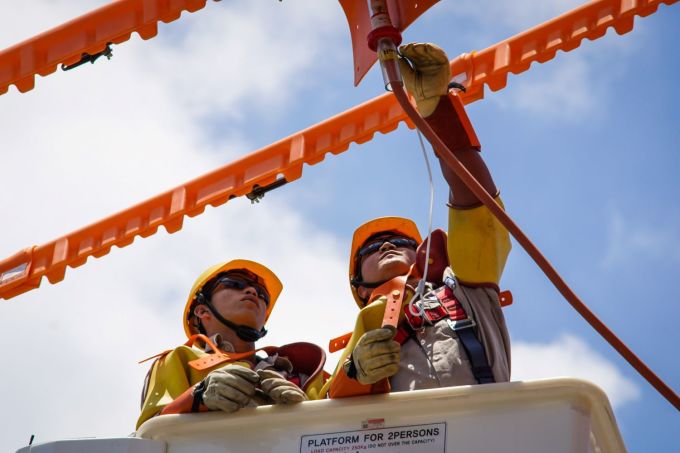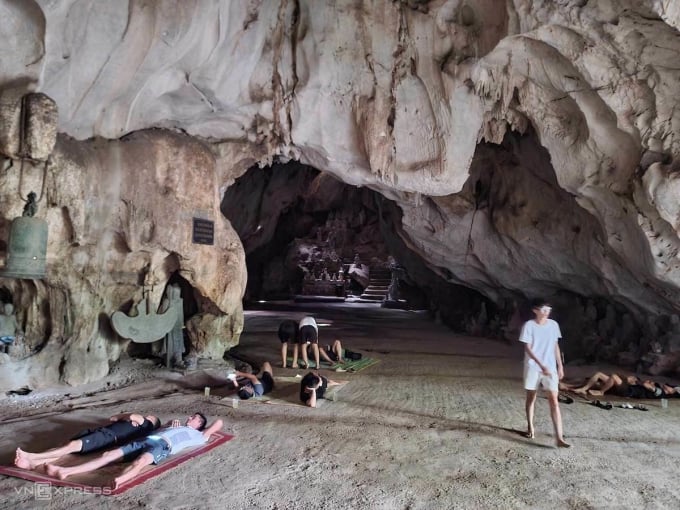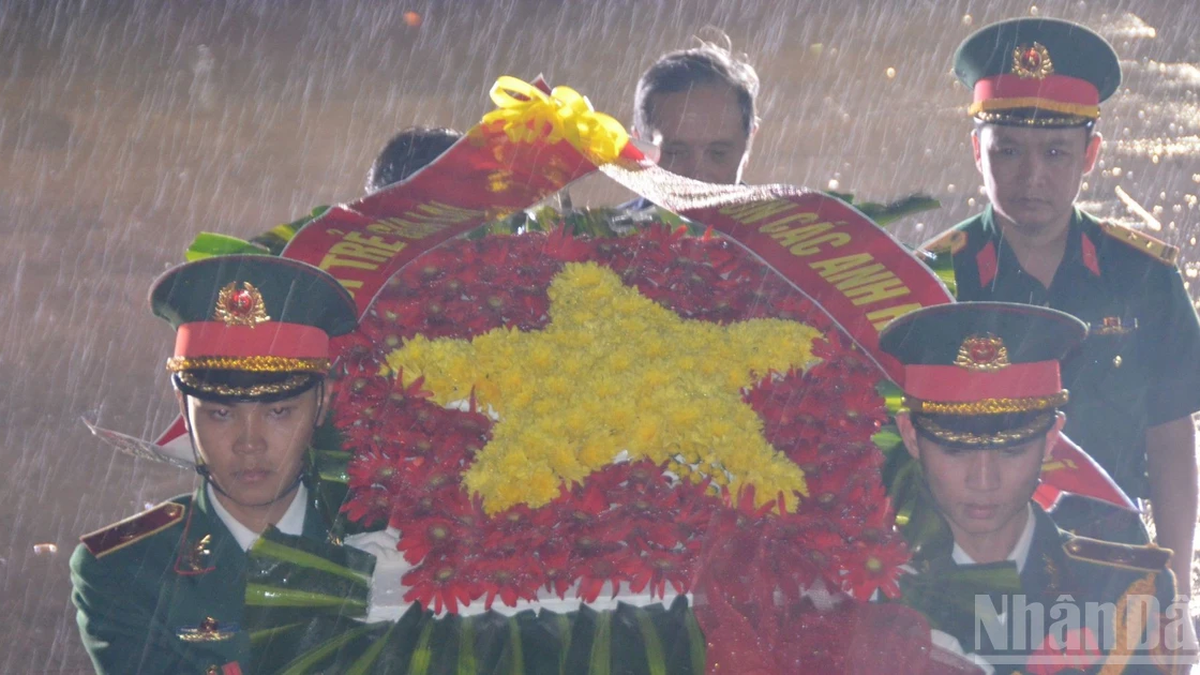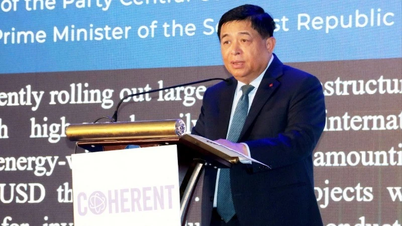The 30% cut in daily electricity demand (6,000 MW) caused widespread power outages in the North, while the South and Central regions were less affected.
From May, the North and Central regions enter summer, the South enters the rainy season. The demand for electricity and the frequency of power outages in the three regions are very different. According to statistics from the Southern Power Corporation, which manages the electricity of Ho Chi Minh City and 21 southern provinces, in the first 5 months of the year, the average number of power outages for people in this area was 0.72 times, down 19.7% compared to the same period in 2022. The average power outage time for customers was 78.65 minutes, down 23.3% compared to the same period last year.
Mr. Lam Xuan Tuan, Deputy General Director of Southern Electricity, explained that since the beginning of the year, the economic situation has been difficult, some factories and enterprises in Binh Duong , Dong Nai... have reduced production, so the total commercial electricity of the whole region has decreased by 2.02% compared to the same period last year. Since May, the peak of the dry season has passed, the power supply for production and people's daily life has continued to be maintained stably.
In Ho Chi Minh City, the highest daily electricity output in May was 94.8 million kWh, with a peak capacity of 4,760 MW. In June, the highest daily output was approximately 90 million, with a peak capacity of less than 4,000 MW. Mr. Bui Trung Kien, Deputy General Director of Ho Chi Minh City Electricity, explained that in addition to the decrease in consumption, the maintenance and repair of the power grid for the rainy season has been completed. Therefore, the number of power outages for repairs has also decreased, except in cases of force majeure, in which case the people will be notified.

Southern Electricity employees repair hotline power, that is, operate on the line but do not cut off the power. Photo: Dinh Hoang
According to the assessment of Vietnam Electricity Group (EVN), the power shortage in the Central and Central Highlands regions is not yet severe. According to statistics from the Central Power Corporation, the unit supplying electricity to 13 provinces from Quang Binh to Khanh Hoa and the Central Highlands, by May, commercial electricity output increased by 4.4% compared to the previous month and increased by 12.34% compared to the same period in 2022. On the hot day of May 23, the amount of electricity consumed was 76.5 million kWh.
The groups of customers using electricity for daily life, administration, agriculture and forestry in the Central and Central Highlands regions all increased, while the industrial sector, the sector that uses the most electricity, decreased. This is also part of the reason why electricity consumption has not been pushed too high and more than 4.1 million individual customers and more than 500,000 businesses in this region have not suffered from rotating power cuts.
In contrast to the South and Central regions, the North is experiencing a stressful summer due to heat and power outages. EVN and its member companies have not announced the scope and customers who have lost power in the past, but a survey from the announced power outage schedule (pre-announced planned outages) shows that most of the Northern localities have lost power.
In Hanoi , from June 2 to 8, except for 4 districts with no power outage schedule, namely Thanh Tri, Dan Phuong, Phuc Tho, Soc Son, the remaining 26 districts, towns and cities received power outage notices. Core districts such as Hoan Kiem, Ba Dinh, Hai Ba Trung tend to have less power outages (2 times) and on a small area of a neighborhood or road section. The remaining districts have power outages 3-5 times with a wider area of several residential groups, sometimes even the whole commune. Customers include both individuals and manufacturing enterprises.
Ha Dong District has the largest number and scope of power outages in the city. Over the past week, every day in the district, there have been power outages in 6 areas on June 7, 7 areas on June 6, and 11 areas on June 5. Hanoi Electricity announced power outages in two time frames: 8am-12pm and 1:30pm-5pm, not at night.
Similarly, Hai Phong City began announcing rotating power outages from June 3 in all 15 districts. Today, An Duong district cut off 6 areas; Hong Bang cut off 4 areas; 4 districts Tien Lao, An Lao, Thuy Nguyen and Hai An cut off 1-2 areas. The outage will last 2-3 hours in the morning or afternoon.
While most major cities have power cuts during the day, many provinces have them at night, such as Ha Tinh and Nghe An. Under the management of the Northern Power Corporation, from June 7 until now, some districts in Ha Tinh have had power cuts to reduce the load as announced, from 7am to 1:30pm and 7pm on the same day. Some areas have had power cuts from 7pm the previous day to 2am the following day. In Nghe An, 21 districts, towns and cities have had power cuts from 5:30am to 8pm and 9am to 11pm.
Unannounced power outage
In areas with less power stress such as the South and Central, the electricity industry has announced the outage schedule on its website and most of the time it is on schedule. However, in the North, especially in large cities like Hanoi, or places with many industrial zones like Bac Ninh and Bac Giang, sudden power outages, even on non-hot days (temperatures below 35 degrees Celsius), are common.
Ms. Hong Khanh, who lives in residential group 5 in Phu Dien ward (Bac Tu Liem, Hanoi), said that for the past four days, three residential groups in the ward have had power outages without notice, the first time from 10am to 7:30pm on June 5; the second time from 10am to 4pm on June 7. Today, according to the announcement, Phu Dien street in Ms. Khanh's area had a power outage from 8am to 5pm, but in reality, there was no power outage.
About 30 km from the center of the capital, Nghia Hao village, Phu Nghia commune, Chuong My district has been experiencing power outages every 1-2 days since the end of May, from 10am to 10pm, sometimes from 8am to midnight. "Because I run a motel, I check the city's electricity website every day to check the power outage schedule. But on the days of power outages, the industry's website does not notify," said Ms. Kim Anh in Nghia Hao village.

Many people went to Tram cave, Phung Chau commune, Chuong My district, Hanoi to avoid the heat at noon on June 6. Photo: Gia Chinh
Not only in Phu Nghia, the situation of unannounced power outages also occurred in many communes in Chuong My district. For example, on June 6, Dong Phuong Yen, Phung Chau, and Nghia Hao communes had power outages from 10am to 1pm.
The sudden power outage turned people's lives upside down. Do Thi Van and many other residents of Phung Chau commune had to take their children into a cave on Tram mountain to avoid the heat. If they had known about the power outage schedule, they would have evacuated their children to relatives' houses. "The power outage happened around noon, leaving me no time to react. I had to take my two children into the cave, make some instant noodles to eat, and take a nap. When the power comes back, I will return," said Van.
Production facilities also had to stop operations and cancel orders due to power outages. At 7am on June 2, more than 30 workers at the Nguyen Trong Noi rattan and bamboo workshop in Phu Nghia commune, Chuong My district, started working to urgently complete 5 orders of wooden furniture that had been placed by customers. The workshop owner calculated to mobilize workers to come early to work until 11:30am because the electricity industry announced a power cut from 12-15pm on the same day. However, after 9am, the generators suddenly stopped due to a power outage. The facility owner said he had to cancel four orders, each worth more than 200 million VND.
According to Circular 20/2020 of the Ministry of Industry and Trade, in all cases of stopping or reducing the power supply, the seller must notify the buyer in advance, except for the following 4 cases. These are incidents on the power grid, incidents in the system causing power outages that the seller cannot control; there is a risk of causing incidents, serious safety loss for people, equipment and the power system; the power system lacks capacity leading to threats to the security of the power system and there is a force majeure event.
However, the unannounced power outages in Hanoi and some other localities were hardly explained clearly. People who questioned the electricity industry staff were comforted by the explanation that it was "force majeure".
Explaining the cause of the widespread power outage, Mr. Ngo Son Hai, Deputy General Director of EVN, said that the demand for electricity supply in the North is 17,000 MW per day, but during hot weather it reaches 20,000 MW. The main power sources in the North are hydroelectricity and thermal power, but both have reduced capacity or encountered problems. Therefore, the electricity industry has to reduce 30% of daily consumption capacity during hot weather, equivalent to about 6,000 MW. Normally, electricity output decreases by an average of 6-10% per day, depending on the weather.
In principle, the National Power System Control Center will allocate capacity to Northern Power and Hanoi Power. These two enterprises will allocate to localities with priority for customers who will not be cut off, including: important electricity customers approved by the People's Committees of provinces and cities, serving important political events.
Reporter Group
Source link































![[Photo] National Assembly Chairman attends the seminar "Building and operating an international financial center and recommendations for Vietnam"](https://vphoto.vietnam.vn/thumb/1200x675/vietnam/resource/IMAGE/2025/7/28/76393436936e457db31ec84433289f72)





































































Comment (0)